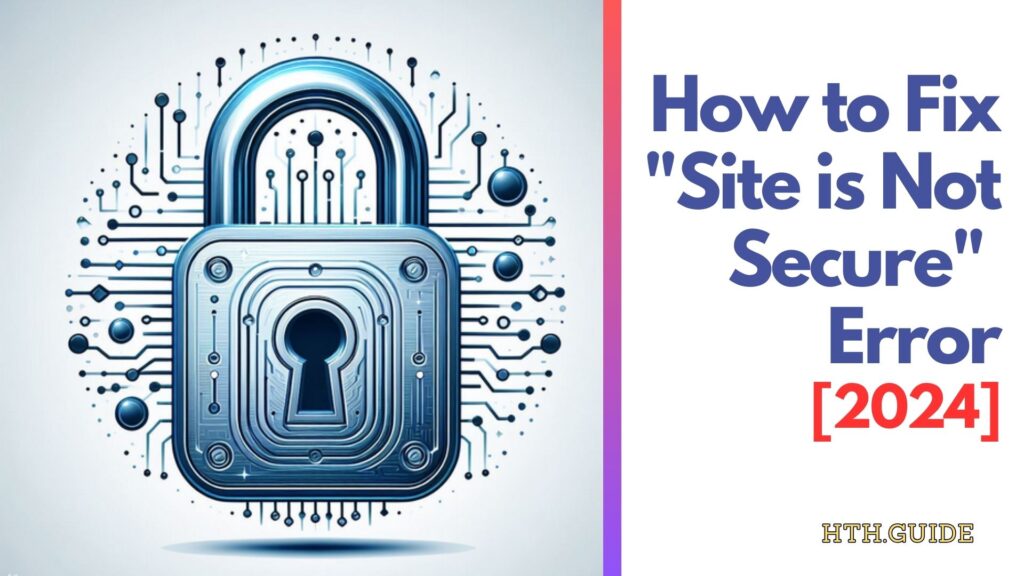On This Page: [hide]
If you are a site administrator or owner, you must know by now that website security is paramount. One of the key components of website security is the use of SSL (Secure Sockets Layer) certificates.

SSL certificates encrypt the data between your website and your visitors, ensuring that sensitive information like credit card numbers and personal details remain private.
In this guide, we’ll walk you through the process of obtaining and installing a free SSL certificate, updating your site to use HTTPS, and troubleshooting common issues.
Step 1: Get a Free SSL Certificate to Fix “Site Is Not Secure” Error
There are several providers, such as Let’s Encrypt, that offer free SSL certificates. These certificates provide the same level of encryption and security as paid certificates, making them a great choice for small businesses and personal websites.
Step 2: Install Your SSL Certificate
Once you’ve obtained your free SSL certificate, the next step is to install it on your website. The exact process for this can vary depending on your hosting provider, but most providers offer detailed guides or customer support to help you through the process.
For full steps on how to install your SSL Certificate the easy way, check the extended “Setup and Install an SSL Certificate” guide.
Step 3: Switch Your Site to HTTPS
After installing your SSL certificate, you’ll need to update your website to use HTTPS (the secure version of HTTP). This usually involves changing the settings in your website’s control panel or content management system.
Step 4: Verify Your SSL Certificate
Once you’ve switched your site to HTTPS, it’s important to verify that your SSL certificate is installed correctly and that your site is now accessible via HTTPS. You can do this by visiting your site and checking the address bar in your browser – it should show a padlock icon and the HTTPS prefix.
Step 5: Redirect All Traffic to HTTPS
To ensure that all visitors are using the secure version of your site, you should set up a redirect from HTTP to HTTPS. This means that even if someone tries to access the HTTP version of your site, they’ll be automatically redirected to the HTTPS version.
## Update Your Site Links
Step 6: Update Your Site Links to Use HTTPS
Finally, make sure all links on your site are using HTTPS to avoid mixed content errors. Mixed content errors occur when a secure page (HTTPS) includes content from a non-secure (HTTP) source.
Troubleshooting Common SSL Issues
If you’re still seeing the “Site is Not Secure” error after following these steps, here are a few troubleshooting tips:
- Clear SSL State: Your browser might be holding onto outdated information. Clearing your SSL state can help.
- Check System Time and Date: An incorrect system time and date can cause SSL errors.
- Clear Browser Cache and Cookies: Old cache and cookies can sometimes cause SSL errors.
- Disable Browser Extensions: Some browser extensions can interfere with SSL connections.
- Update Your Browser: Make sure you’re using the latest version of your browser.
- Update Your Operating System: An outdated operating system can cause SSL errors.
Remember, a secure site not only protects your users but also helps with SEO. Google and other search engines give a ranking boost to sites using HTTPS.
So, it’s worth taking the time to secure your site with an SSL certificate. If you’re still having trouble, it might be worth reaching out to your hosting provider or a web developer for further assistance.
“Site Is Not Secure” SSL Error – Conclusion
In conclusion, securing your website with an SSL certificate is a crucial step in protecting your users’ information and enhancing your site’s SEO. With the availability of free SSL certificates and the steps outlined in this guide, you can secure your website and provide a safe browsing experience for your visitors.
